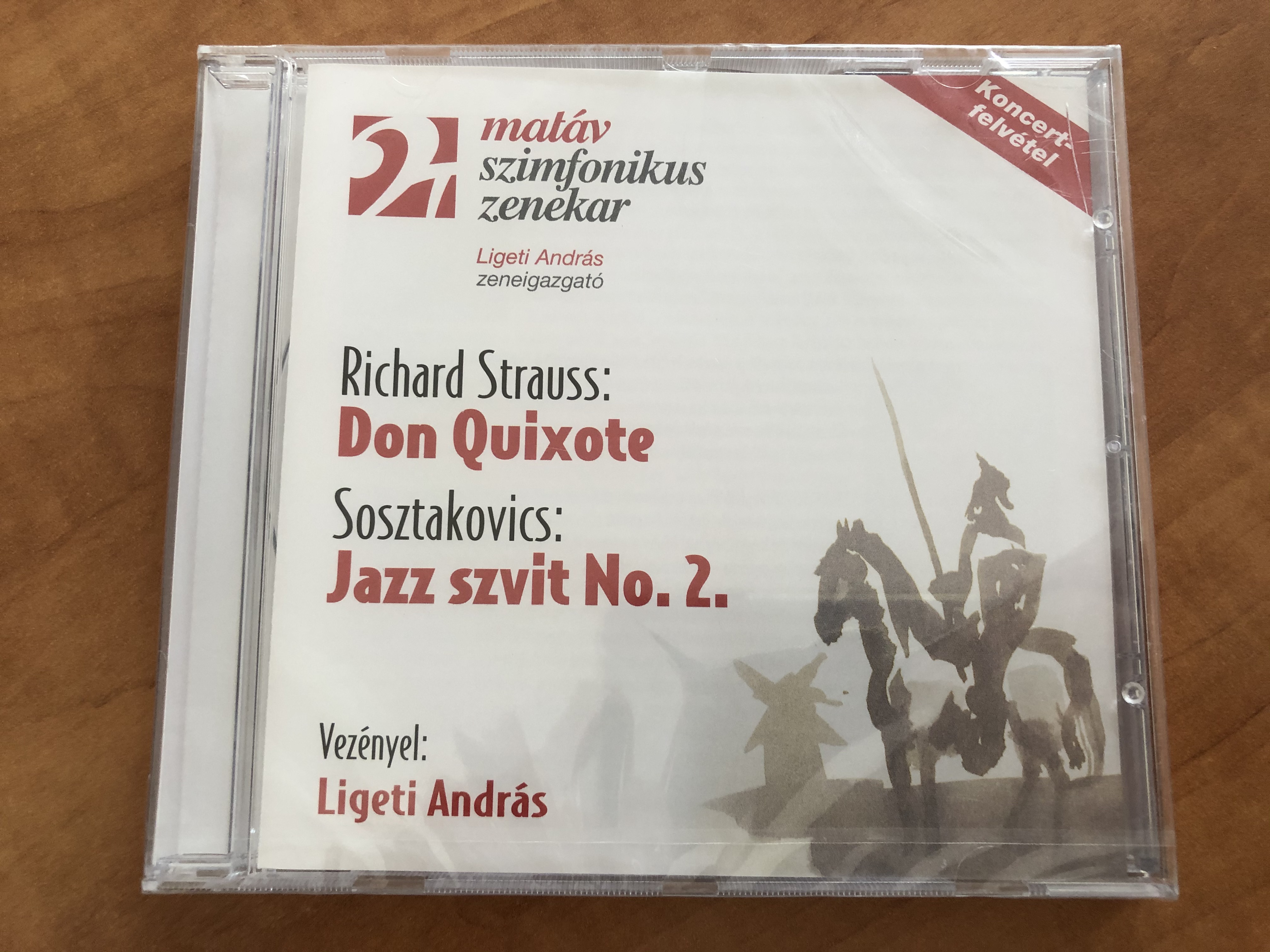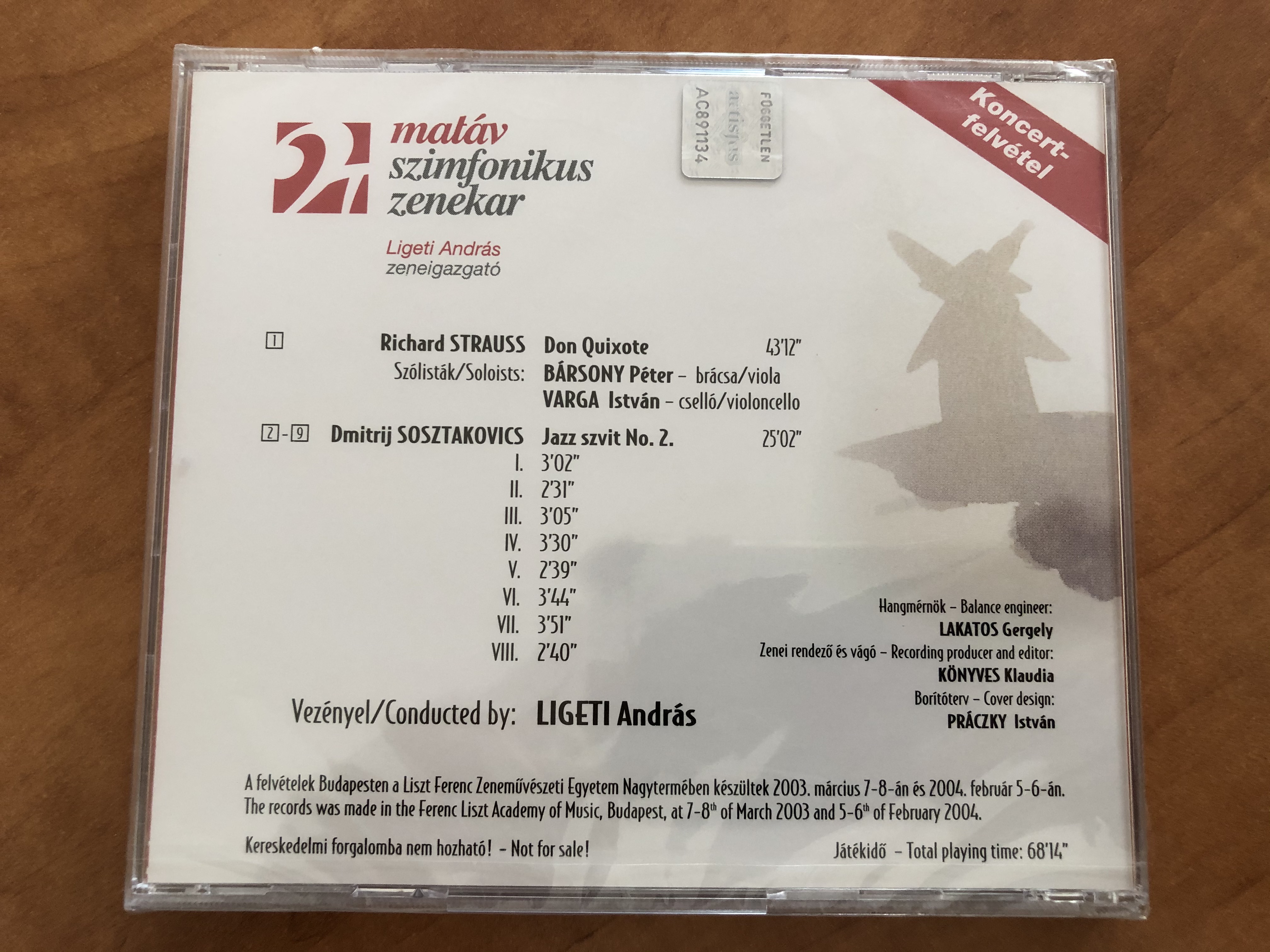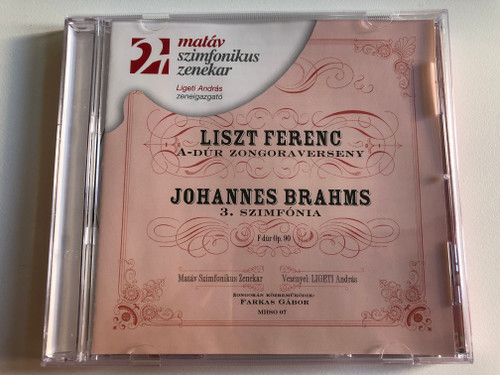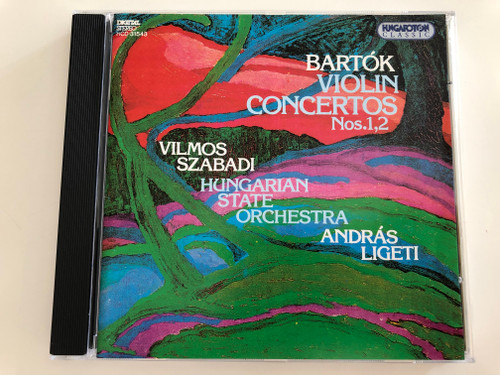Product Overview
Richard Strauss: Don Quixote, Sosztakovics: Jazz Szvit No. 2. / Vezenyel: Ligeti Andras / MATÁV Szimfonikus Zenekar, Ligeti András zeneigazgato / Audio CD 2004
MHSO 12
Don Quixote, Op. 35 is a tone poem by Richard Strauss for cello, viola, and orchestra. Subtitled Phantastische Variationen über ein Thema ritterlichen Charakters (Fantastic Variations on a Theme of Knightly Character), the work is based on the novel Don Quixote de la Mancha by Miguel de Cervantes. Strauss composed this work in Munich in 1897. The premiere took place in Cologne on 8 March 1898, with Friedrich Grützmacher as the cello soloist and Franz Wüllner as the conductor.
The score is 45 minutes long and is written in theme and variations form, with the solo cello representing Don Quixote, and the solo viola, tenor tuba, and bass clarinet depicting his squire Sancho Panza. The second variation depicts an episode where Don Quixote encounters a herd of sheep and perceives them as an approaching army. Strauss uses dissonant flutter-tonguing in the brass to emulate the bleating of the sheep, an early instance of this extended technique. Strauss later quoted this passage in his music for Le bourgeois gentilhomme, at the moment a servant announces the dish of "leg of mutton in the Italian style". Graham Phipps has examined the structure of the work in terms of Arnold Schoenberg's ideas of 'surface harmonic logic' and 'developing variation'.
Dmitri Dmitriyevich Shostakovich (25 September [O.S. 12 September] 1906 – 9 August 1975) was a Soviet composer and pianist. He is regarded as one of the major composers of the 20th century, with a unique harmonic language and a historic importance due to his years of work under Stalin.
Shostakovich achieved fame in the Soviet Union under the patronage of the Soviet chief of staff Mikhail Tukhachevsky, but later had a complex and difficult relationship with the government. Nevertheless, he received accolades and state awards and served in the Supreme Soviet of the RSFSR (1947) and the Supreme Soviet of the Soviet Union (from 1962 until his death).
A polystylist, Shostakovich developed a hybrid voice, combining a variety of different musical techniques into his works. His music is characterized by sharp contrasts, elements of the grotesque, and ambivalent tonality; he was also heavily influenced by the neoclassical style pioneered by Igor Stravinsky, and (especially in his symphonies) by the late Romanticism of Gustav Mahler.
Shostakovich's orchestral works include 15 symphonies and six concerti. His chamber output includes 15 string quartets, a piano quintet, two piano trios, and two pieces for string octet. His solo piano works include two sonatas, an early set of preludes, and a later set of 24 preludes and fugues. Other works include three operas, several song cycles, ballets, and a substantial quantity of film music; especially well known is the "Waltz No. 2" from the Suite for Variety Orchestra, as well as the suite of music extracted from The Gadfly.
Tracklist:
| 1 | Don Quixote
Composed By – Richard Strauss
Composed By – Richard Strauss
|
43:12 | |
|
Jazz Szvit No. 2. Composed By – Dmitrij Sosztakovics
Composed By – Dmitrij Sosztakovics
|
(25:02) |
||
| 2 | I. | ||
| 3 | II. | ||
| 4 | III. | ||
| 5 | IV. | ||
| 6 | V. | ||
| 7 | VI. | ||
| 8 | VII. | ||
| 9 | VIII. |
- Conductor, Music Director – Ligeti András
- Design – Práczky István
- Engineer – Lakatos Gergely
- Orchestra – MATÁV Szimfonikus Zenekar
- Producer, Editor – Könyves Klaudia












